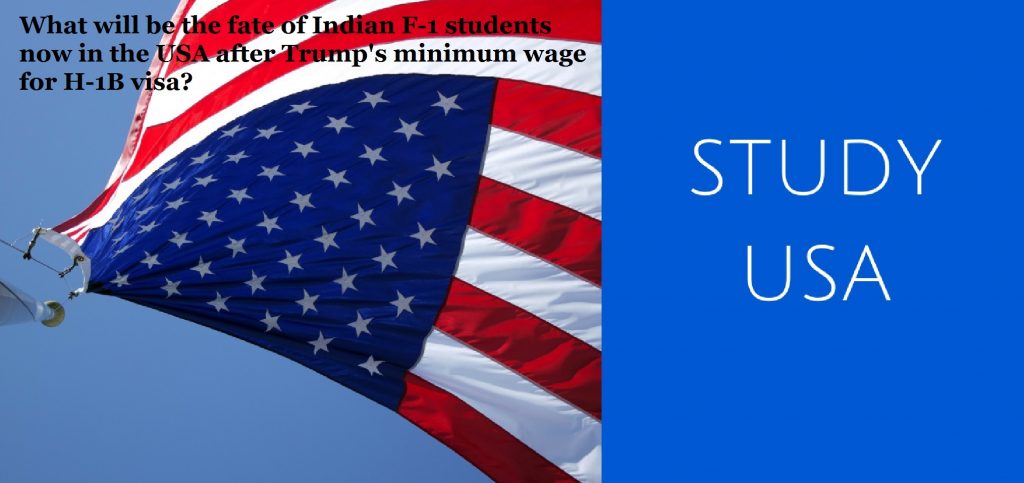Reforming H1B visa programme is once thought out to be a strategic shift for the Indian IT companies and workers too, but this turned out to be really disastrous for the immigrants. F-1 visa is visa through which an immigrant can study in the US but it doesn’t guarantee their stay after completing studies. For staying longer they need a sponsorship from a company to work there. But that seems tough as per the new regulation under president trump’s rule. This article discusses What will be the fate of Indian F-1 students now in the USA after Trump’s minimum wage for H-1B visa?
What are the proposed changes to H-1B visa norms?
Major of the following changes is doubling of the minimum salaries as it put American companies in the dilemma of hiring a talented skilled worker or less skilled but in the budget worker. Let’s have a look at some proposed changes:
- Increase in minimum salaries of H-1B visa holders which is more than double from $60,000 to $130,000.
- 20% of H-1B visas applied will be reserved for small and start-up employers.
- To ensure equal distribution they proposed the removal of ‘per country’ cap for employment visas.
- Firms have to hire American employees before hiring H-1B visa holders.
- Students studied in the US will get preference over students gets in under computerized lottery system.
- Outsourcing companies are restrained from importing workers for temporary training and send them back to their home country.
- Contrary to the Obama’s rule, spouse of H1B visa holder is not allowed to work.
- Companies having more than 50 employees, of which half are H-1B, can’t hire any addition H-1B visa holders.
- Department of Labor is authorized for the strict audits to reduce fraud or misuse.
What is the H1B visa and why does it matter to Indians?
Each year maximum of 85000 employees gets the H-1B visa which included 20,000 employees who have done their masters from US universities. According to the data by USCIS, in 2014, around 65% of the applications have approved and most of them are of Indians. It only went higher in 2016, as 72% of the total issued application is of Indians.
How will the new H1B Visa Bill change this picture for Indian workers in USA?
H-1B visa came into force in 1990 and the main reason it is still active because it allows America employers to hire a cheap and skilled worker. Indian IT worker gives a competitive edge to it.
Let’s look at some data and understands it, in 2015 an H-1B visa holder employees receive a minimum salary of $65,0000 as compared to American worker who gets minimum of $90,000. But now the case is due these changes salary required has been increased to $130,000 which negates the hiring of an Indian worker, because they are no longer cheap for the American employer. This change is going to hit Indian workers hard.
This abrupt change in the wages which is so high for an employer to bear. Now employer will let go the H-1B visa holder employees as they don’t want to increase their cost in the long term.
How will H1B Visa rule affect the IT sector as a whole?
This shift is not only going to affect the individual but completes IT sector as a whole. For profitability of the offshore model, Indian IT sector largely depend on this regime. For instance, from the US alone the Indian IT industry makes about $65 billion of export revenues, according to report Business Standard.
Let’s take a look at some data, with Infosys 60% of the total US employees are H-1B holders, this will increase their cost up-to $2.7 billion, a report by MoneyControl.
Is H1B Visa rule change bad news for Indian Immigrants in USA?
No, not all bad news, there is good news for the F-1 visa holders, who want to study in the US, as this will act as a bridge between their study status and permanent residency. The only problem is that they have to find a job which pays as high as $130,000. Now what is suggested over here is to get a job that high in pay one must have experience in his field in India, then apply for the F-1 visa. Now chances increase to get hired if you apply for the senior H-1B level jobs.

